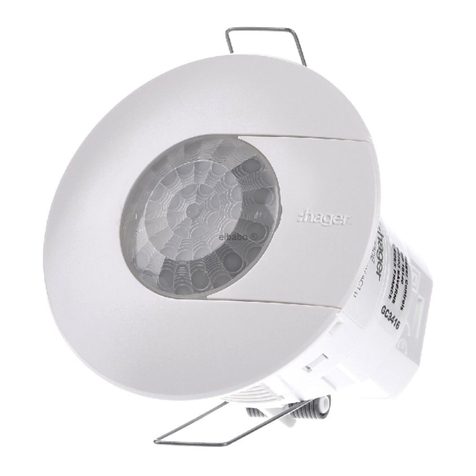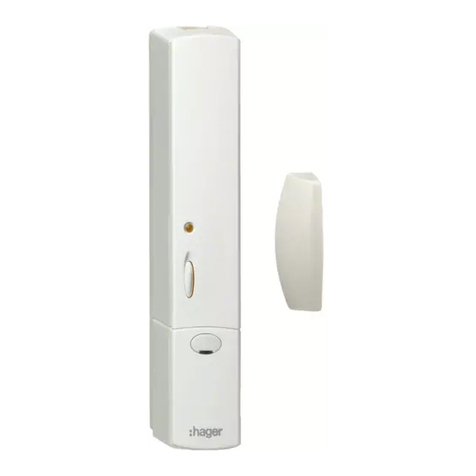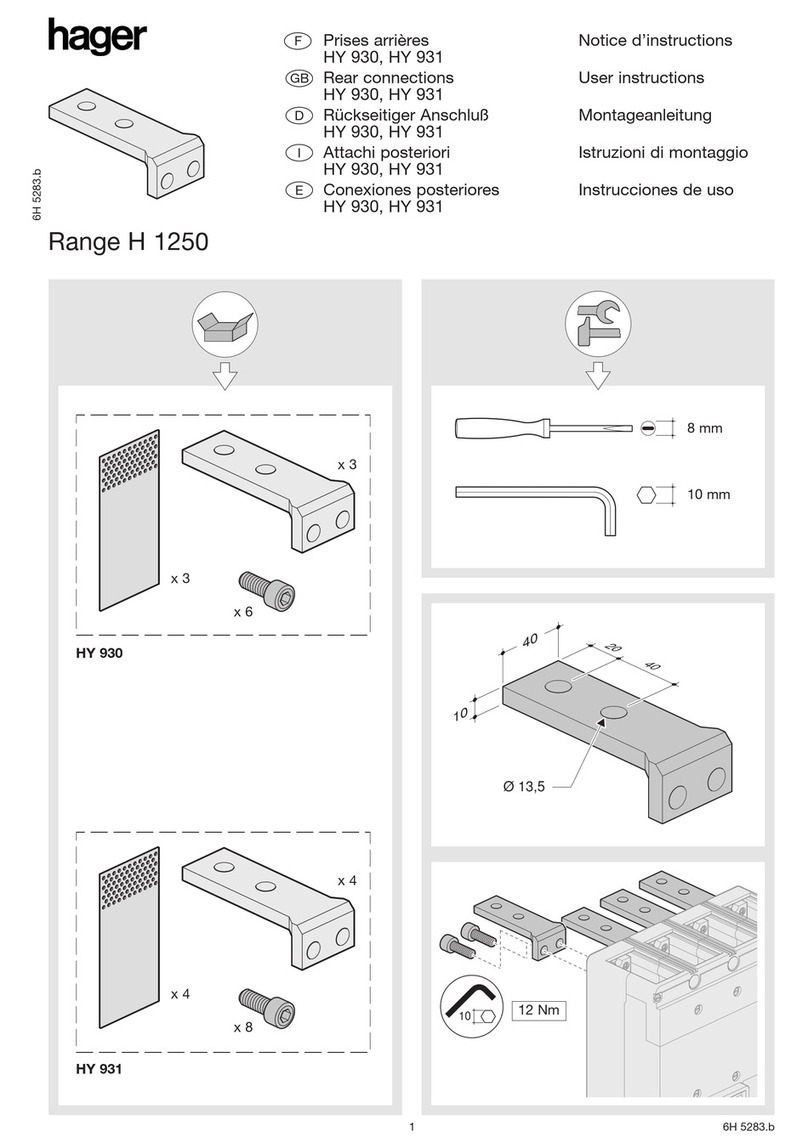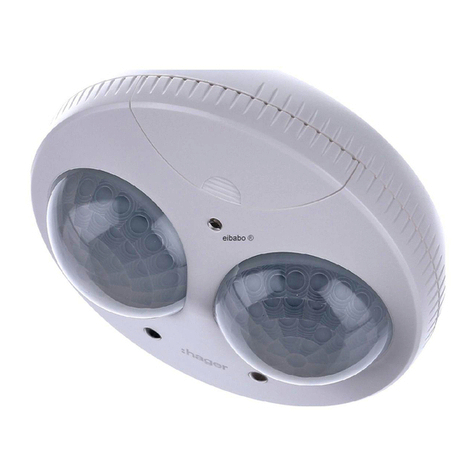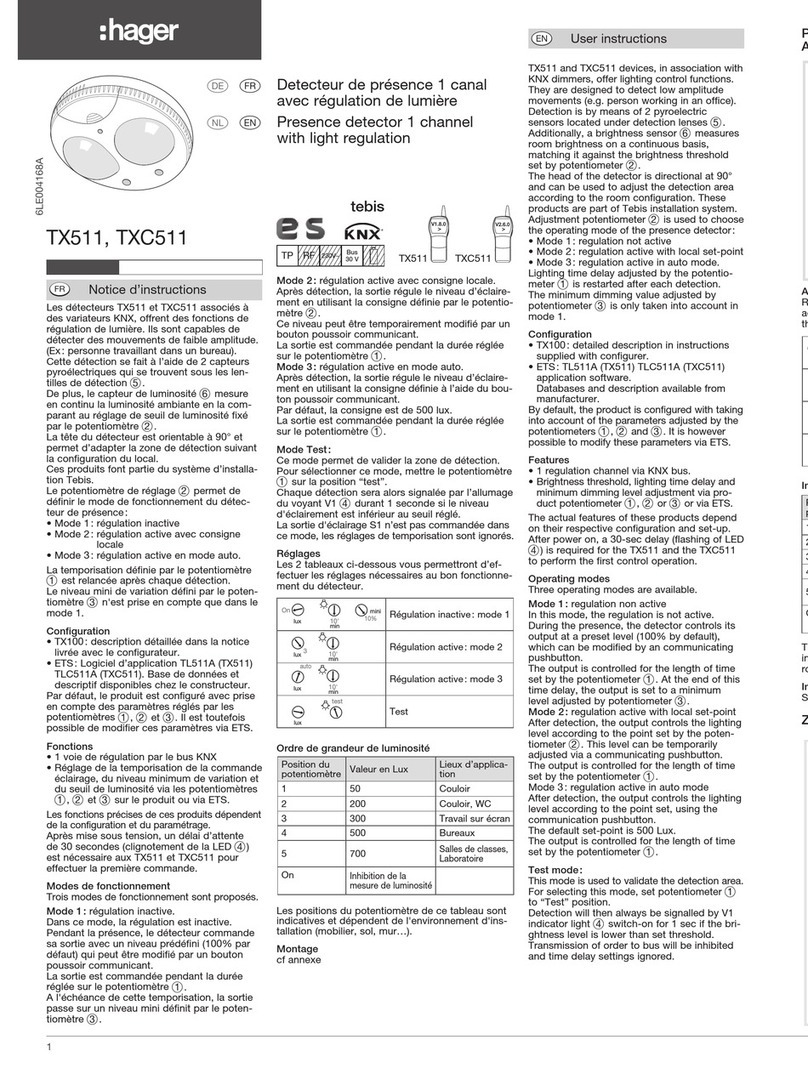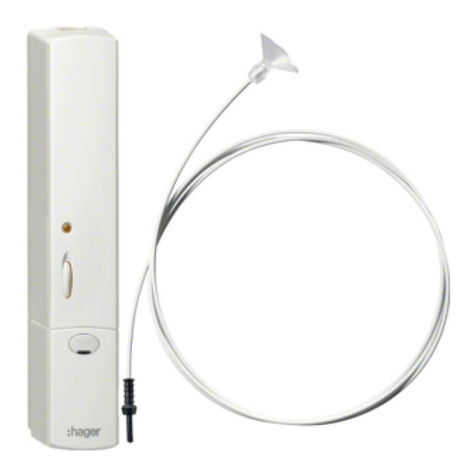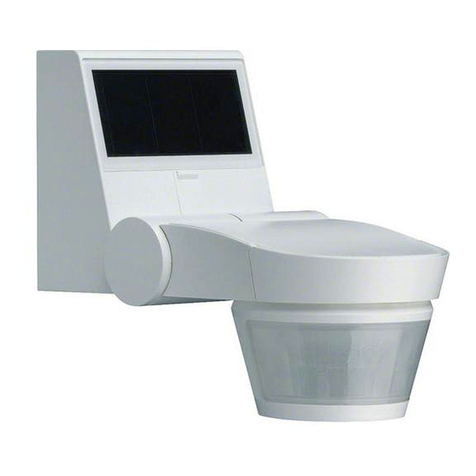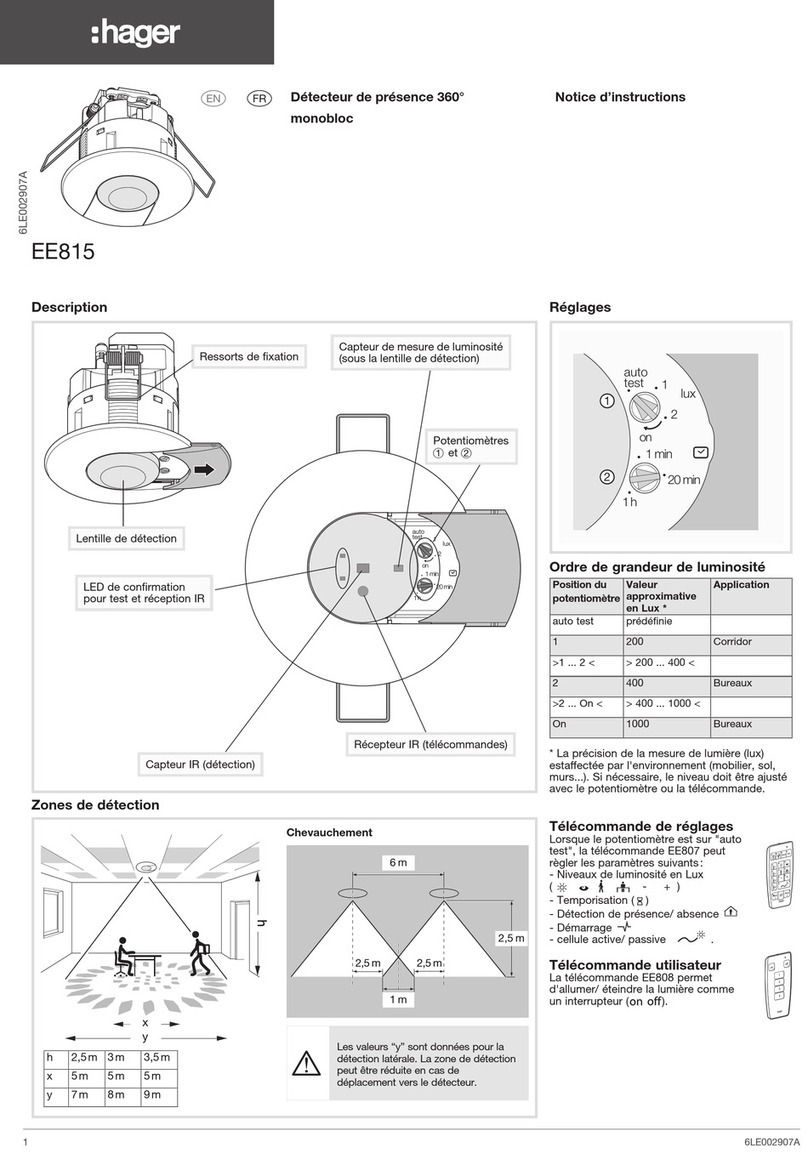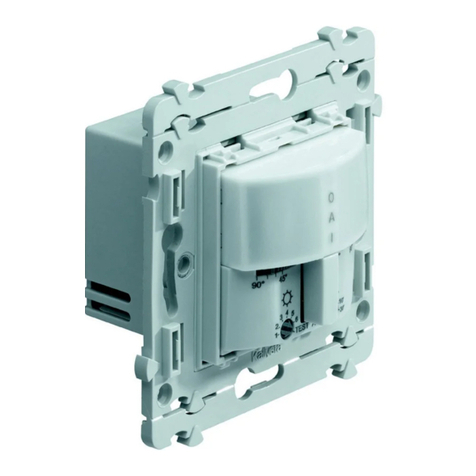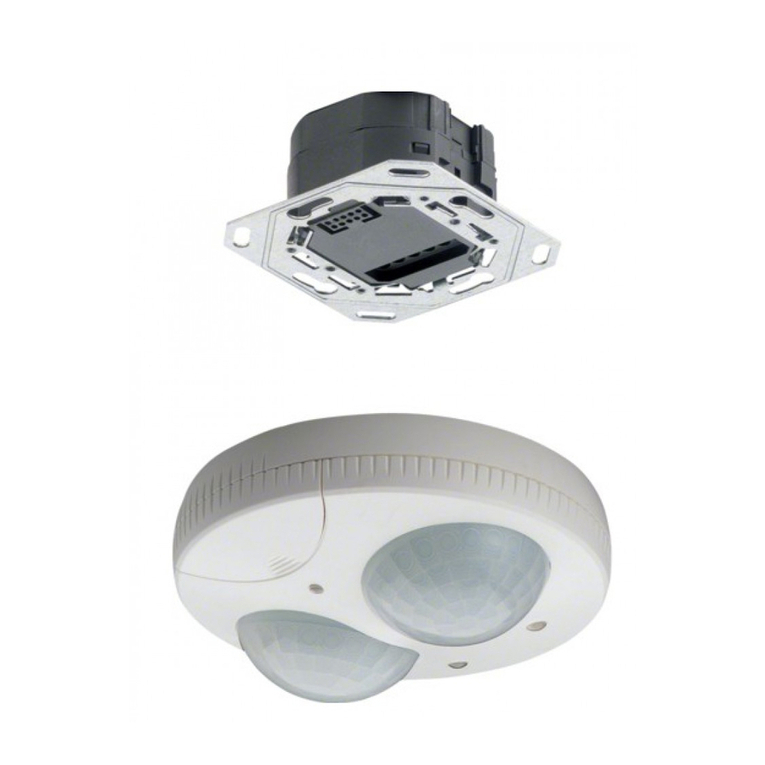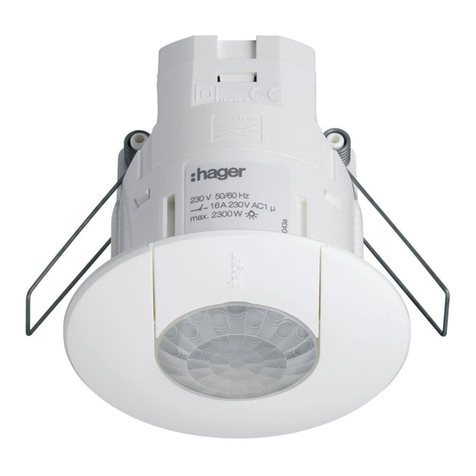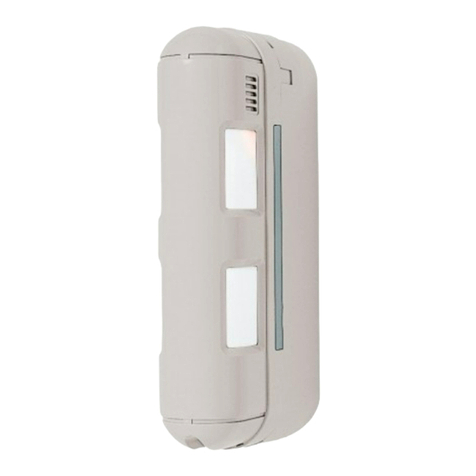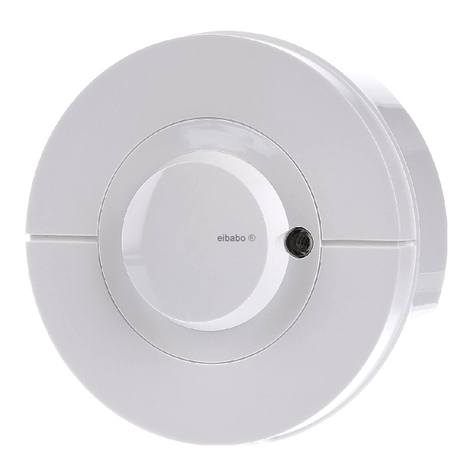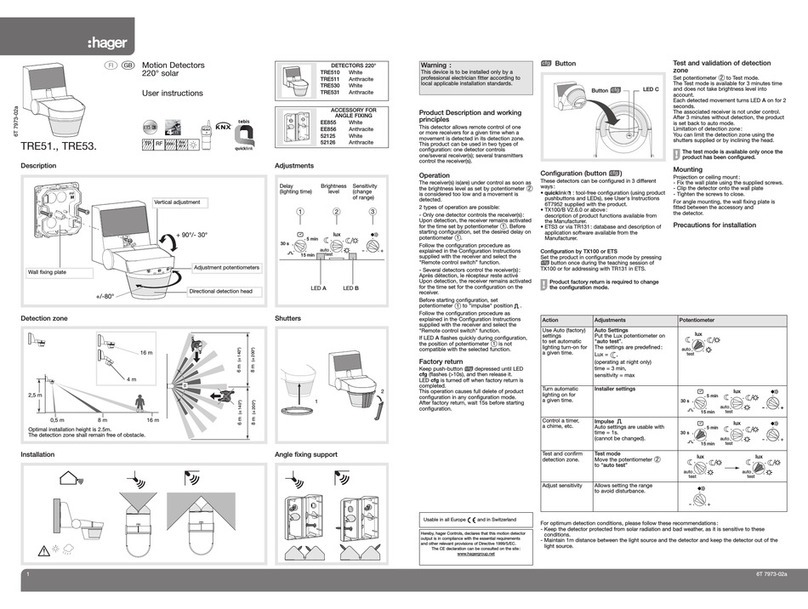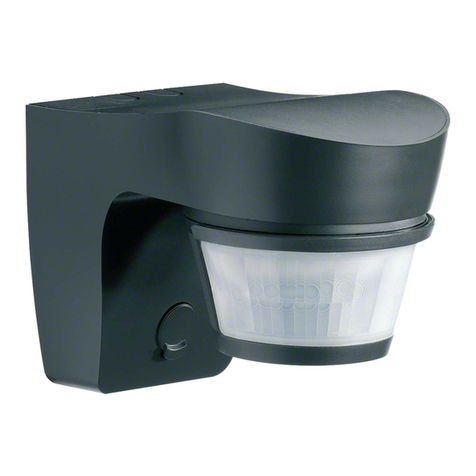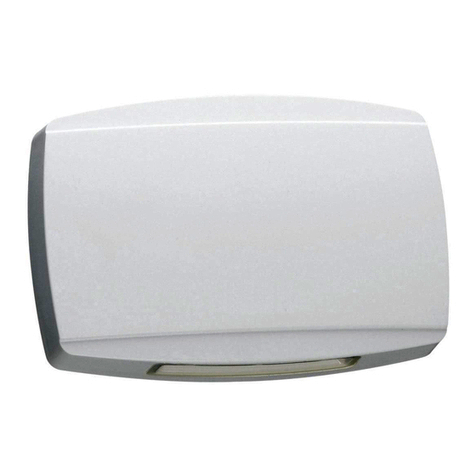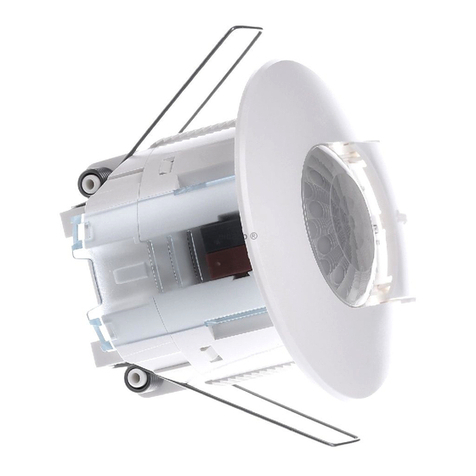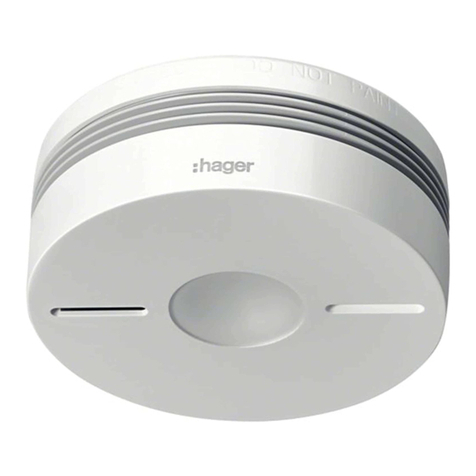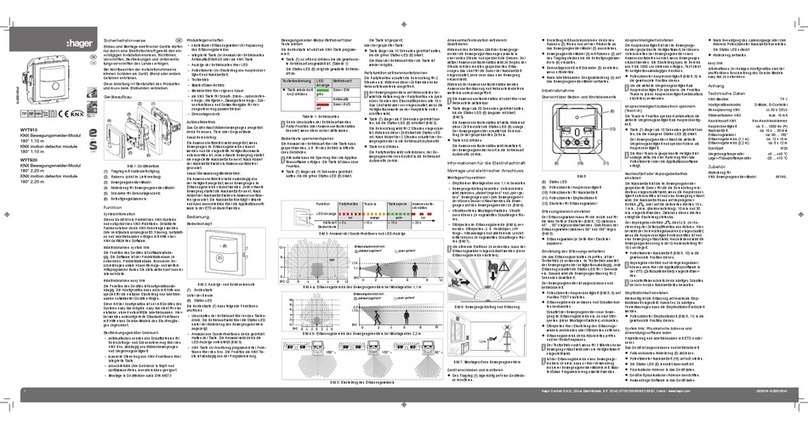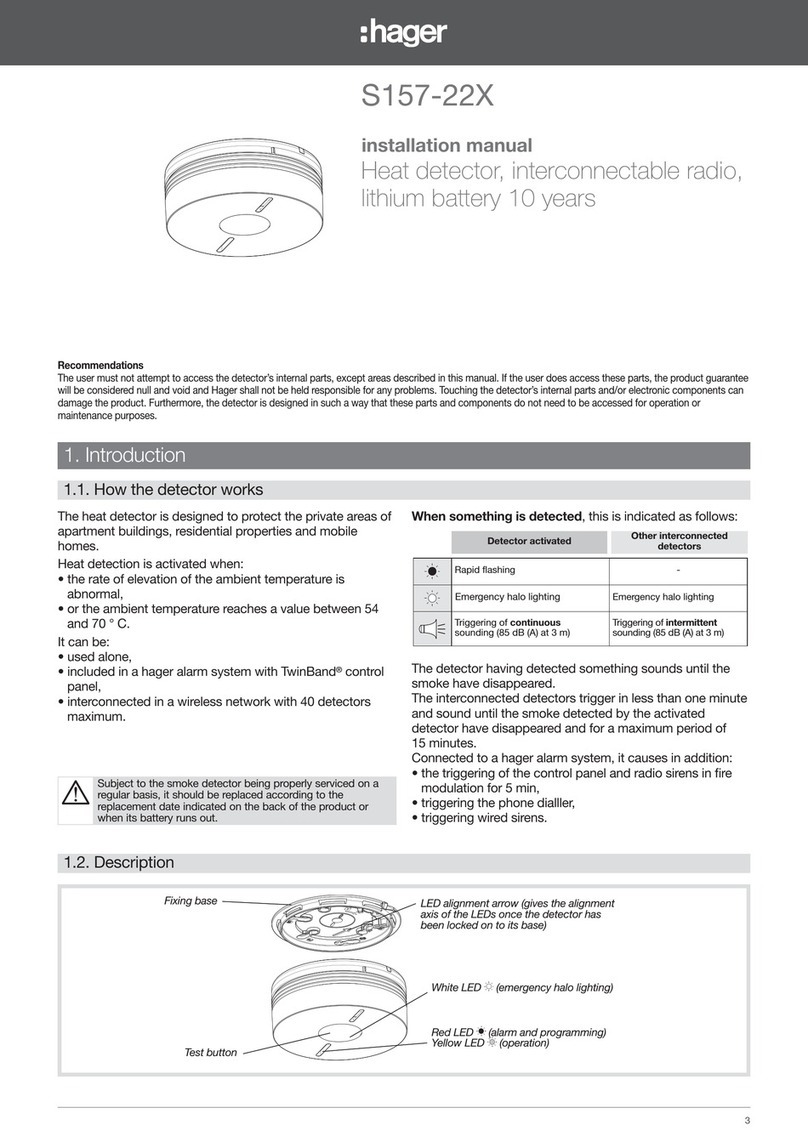
TRC321B 4 6T 8085-02a
■Configuration principle
The media coupler enables confuguration by ETS of RF devices for a KNX radio installation or a mixed KNX installation
including RF devices and wired buses. For normal operation, the radio transmitters operate in a one-direction mode.
Configuration takes place in bi-directional mode.
Procedure:
• Create a line reserved for RF devices in your ETS plan. First insert the media coupler into this line, then insert the other
RF devices into this line,
• Perform the programming, parameter settings and group addressing for all the RF products except for the media coupler,
• Download the physical address of the media coupler. This must be of the type 1.1.0 (always end with a zero),
• Install the media coupler plug-in: Right-click on the product in the ETS tree structure, then select edit the parameters.
Windows Administrator rights are necessary to install the plug in.
■Physical addressing:
• Click on the button Physical addressing to display the physical addressing screen for the plug in,
• Select the device to be addressed, then click on the field Addressing in the menu line at the upper left of the window,
• Press the cfg button for each transmitter to be addressed, then click Device search (if the device is not found by the
search, perform a RESET device out of installation, or manually on the device by pressing the cfg > 10 s button)
• Select the device to be addressed and click on Attribute address. The physical addressing of the product is performed.
The product is now part of the installation,
• After downloading the physical address, the symbol appears in front of the product,
• Repeat this operation for the other radio transmitters.
Caution: After an interruption in the above operations greater than 10 mn, it is necessary to press the cfg button again on the
transmitter devices to be programmed.
2.3
Configuration with media coupler (ETS version
>
3.0f)
